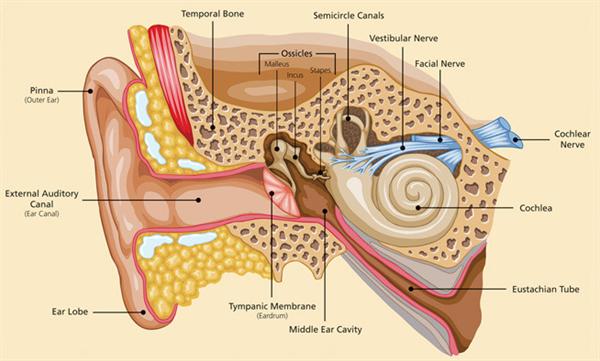Hearing device that amplifies sound using a tympanostomy tube
Brief Description
Non-invasive hearing technologies have inherent problems, including occlusion, feedback, and low satisfaction rates with sound quality and aesthetics. Middle ear implants and cochlear implants can provide acceptable sound quality, however, drawbacks of these types of devices includes high cost and the requirement for invasive surgery. To overcome these issues, researchers at UC, Irvine developed the Direct Hearing Device (DHD; previous patent). The DHD is a non-invasive hearing device that couples to the umbo at the tympanic membrane (TM; the deepest part of the eardrum) and drives the TM and attached ossicular chain to facilitate sound transmission. Researchers have continued to improve this device by exploring the best embodiment for contact between their DHD and the TM.
Full Description
Researchers
at UC, Irvine have developed and improved a hearing aid apparatus for patients
with moderate to severe hearing loss.  This hearing aid device is comprised of a
direct-DHD having a silicon mold on one end, the silicon having an attached
magnet; and a tympanostomy tube with a ferromagnetic cap on the other end, the
tympanostomy tube being insertable into a TM. Once the DHD is placed inside an
ear canal, such that the magnet attached to the silicone mold is in contact
with the ferromagnetic cap of the tympanostomy tube, the magnet of the DHD will
lock with the ferromagnetic cap to establish a stable connection for mechanical
actuation of the TM. Finally, the tympanostomy tube with the ferromagnetic cap
transmits the driving force of the DHD onto the middle ear ossicles. This
stable connection and driving force eliminates occlusion and feedback, and
amplifies sound thereby improving a patient’s quality of hearing.
This hearing aid device is comprised of a
direct-DHD having a silicon mold on one end, the silicon having an attached
magnet; and a tympanostomy tube with a ferromagnetic cap on the other end, the
tympanostomy tube being insertable into a TM. Once the DHD is placed inside an
ear canal, such that the magnet attached to the silicone mold is in contact
with the ferromagnetic cap of the tympanostomy tube, the magnet of the DHD will
lock with the ferromagnetic cap to establish a stable connection for mechanical
actuation of the TM. Finally, the tympanostomy tube with the ferromagnetic cap
transmits the driving force of the DHD onto the middle ear ossicles. This
stable connection and driving force eliminates occlusion and feedback, and
amplifies sound thereby improving a patient’s quality of hearing.
Suggested uses
We are currently looking for a commercial partner to further develop this product to improve the quality of hearing in patients with hearing loss.
Advantages
- Noninvasive procedure to implant
the hearing device.
- Low cost.
- Eliminates occlusion and feedback improving patient’s quality of hearing.
- Significantly improved connection between the DHD and the TM to provide a secure attachment and more efficient transfer of mechanical energy to the middle ear.
Patent Status
| Country | Type | Number | Dated | Case |
| United States Of America | Issued Patent | 9,794,704 | 10/17/2017 | 2014-242 |
Contact
- Richard Y. Tun
- tunr@uci.edu
- tel: View Phone Number.
Inventors
- Bachman, Mark G.
- Djalilian, Hamid R.
Other Information
Additional Technologies by these Inventors
- Micro-electromagnetically Actuated Latched Switches
- Manumeter for Monitoring and Assessing Upper Extremity Rehabilitation
- Magnetic Recovery Method Of Magnetically Responsive High-Aspect Ratio Photoresist Microstructures
- Use Of Micro-Structured Plate For Controlling Capacitance Of Mechanical Capacitor Switches
- Drug Combinations For Treatment Of Tinnitus, Vertigo, and Headache
- Magnetically Actuated Micro-Electro-Mechanical Capacitor Switches In Laminate
